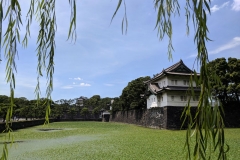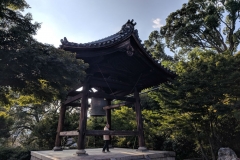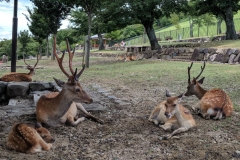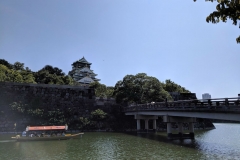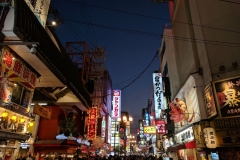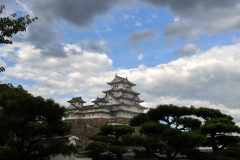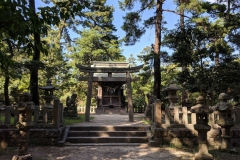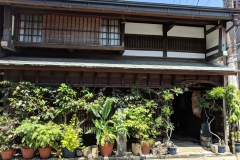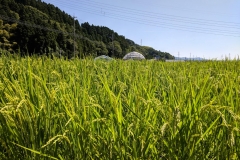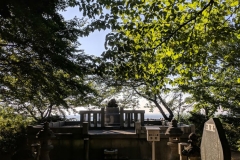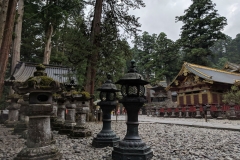This year, my plan for a summer hiking trip had to wait after I injured my knee back in January. Japan has always been lingering on my travel list since I took a few semesters of Japanese during my Linguistics studies many years ago. Somehow though, there were always other destinations which made the cut (still so much to see in Europe!). After some research and contemplation, I decided that yes, this year did feel like a good year to visit Japan.
Japan is a huge country with five big islands and many, many small ones. So there’s a lot to discover and it’s not easy to decide what to see and what to skip. In preparation, I asked a few friends who’ve been to Japan for tips. I also followed many shiny Instagram channels and googled around. Eventually, I decided to visit Tokyo, Kyoto, Osaka, Kanazawa and Nikko with a few day-tours to smaller places in between. Hokkaido and Okinawa have to wait for another time.
Getting around the bigger Japanese cities and getting from place to place is usually super easy in Japan. As a non-resident, you can get a JR Rail Pass in advance and use it on most of the high-speed Shinkansen and the local train lines.
Tokyo
After a rough start with flight troubles, I finally arrived in Tokyo for a three-weeks trip on July 22nd and dived right into the big city. With a Japanese summer of an average of 35 to 38°C and a high humidity, I adapted slowly to the constant heat. Tokyo is a very business-driven city, some would say too polished. It has many interesting historic, cultural and creative places. I also had the luck to meet up with a friend who is living in Tokyo now and who showed me around the Shibuya area where you can still find one of the famous alleys with tiny traditional bars, hidden directly behind the train tracks, and some great restaurants. Akihabara, the crazy gaming and manga quarter, was an amazing experience as well as the praised teamLab Borderless Digital Art Museum. I also visited several parks, e.g. around the Imperial palace as well as Ueno with its tori gates, its big lake and the National Museum. Not too far from Ueno Park in the Asakusa area, you can visit the famous Senso-ji Temple with many buildings and a long history to discover.
Kyoto
Kyoto is very different from Tokyo. First of all, it’s a lot smaller and has a lot more historic buildings, shrines and temples. Most of Tokyo was destroyed in the big earthquake in 1703 when the city lost many architectural treasures. In Kyoto, you can visit some impressive Shinto shrines and Buddhist temples. There is a whole area in the East of the city where you can walk from temple to shrine to pagoda on repeat for probably a day. From there, you can also discover the famous Geisha district Gion. Kyoto is home to a very well maintained Imperial Palace which you can visit in parts, for free. It’s the perfect location to imagine how the Japanese emperors lived there once upon a time.
In the West of the city, you can walk through the famous bamboo forest, Arashiyama. Go there early because the place will get super packed by 11 am latest and you will have problems to get any picture without other people in it. What makes the Arashiyama area actually even more attractive to visit is the villa and park built by a famous Japanese actor Okochi Denjiro in the 1960s right behind it. From there, you have a splendid view over the whole city and the park itself is stunning. A delicious Matcha tea is included in the ticket as well.
I also went on a short trip to Nara, a former capital of Japan and the home of some important shrines and temples as well as the famous deer park. The park is a nice place and it certainely has its historic merit but it was weird and kind of sad seeing people running after half-tame deer to feed and pet them.
Osaka
Osaka is the more relaxed little sister of Tokyo. It’s the second biggest city in Japan and has a rather hedonistic vibe. The city offers many distractions besides the usual shrines and temples. The Shinsekai and Dotobori areas are not to be missed in the evenings when people are swarming into the area. There are many little alleys to discover and lots of food stalls and restaurants as well as shops open until late in the evening.
From Osaka, I also did a few day trips to other places. Besides a small hiking trip to the Minoh waterfall in the North of the city, I visited the famous Himeji Castle, one of only five remaining traditional castles in Japan and a UNESCO World Heritage Site.
In addition, I went to Amanohashidate at the Japanese Sea to visit one of the most scenic spots in Japan. It is a truly paradisiac place and a wonderful relieving change from the big cities.
Kanazawa
Kanazawa has a similar historical value as Kyoto but is a lot smaller, less crowded and just super interesting in general. The Geisha district has some of the best preserved historic buildings in Japan and you can visit original geisha and samurai houses. Another gem is the Kenroku-en Park which is one of the oldest and most well-preserved parks in the country.
Nikko
From Kanazawa, I traveled on to Nikko, one of the most important historic sites in Japan. The city hosts the mausoleum of Shogun Tokugawa Ieyasu and Shogun Tokugawa Iemitsu. It’s a vast area of huge shrines and temples and a well-deserved UNESCO World Heritage Site. After visiting the site on the day of my arrival, it was raining heavily on the second day. When it stopped a bit, I went off to discover some of the bypaths and came across some other historical sites with buildings, little shrines and statues. And the best part: I got the place nearly to myself.
After Nikko, I returned to Tokyo for my last few days in Japan. These three weeks were a true pleasure and an adventure to discover such a unique country and culture. Although it can be an intense country (for me mostly because of the language challenge), I felt weirdly relaxed when I came back. Japanese people are very polite and distanced, they always give you space, except in the metro during rush-hour. I also felt very safe. Japan is definitely one of the safest countries I’ve ever traveled to. It’s super easy to get around by train and to make the most of the time you have in the country.
The food is of outstanding quality, especially if you go to restaurants where the locals would eat as well. Ramen, udon and soba noodle dishes all over the place as well as Korean and Chinese food and a lot of sweets. Green tea is a big thing in Japan, especially Matcha. They produce so many delicious sweets with it, e.g. KitKat or ice cream.
And if you wonder about the famous Japanese mountain: Unfortunately, I didn’t see Mt. Fuji while traveling from Tokyo to Kyoto because the mountain is hidden in clouds most summer days. Nevertheless, I got lucky enough to see its peak while flying into Tokyo Haneda Airport in the beginning of my trip. Truly breathtaking!

_____
During those three weeks, I also had the time to think about the upcoming months and what I’d like to work on, including a few new little projects. With my friend Jésus, I also recorded a conversation (some might it call a podcast) which is hopefully the beginning of many more. Stay tuned!




